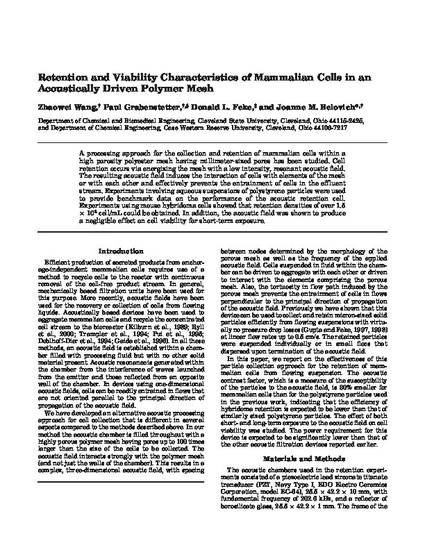
A processing approach for the collection and retention of mammalian cells within a high porosity polyester mesh having millimeter-sized pores has been studied. Cell retention occurs via energizing the mesh with a low intensity, resonant acoustic field. The resulting acoustic field induces the interaction of cells with elements of the mesh or with each other and effectively prevents the entrainment of cells in the effluent stream. Experiments involving aqueous suspensions of polystyrene particles were used to provide benchmark data on the performance of the acoustic retention cell. Experiments using mouse hybridoma cells showed that retention densities of over 1.5 × 108 cell/mL could be obtained. In addition, the acoustic field was shown to produce a negligible effect on cell viability for short-term exposure.
